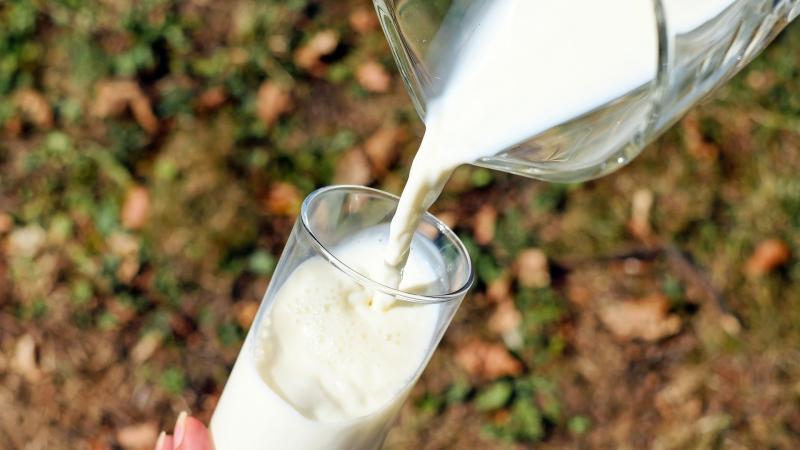
The rise of antibiotic resistance in bacteria is an alarming threat to the world today. Numerous diseases like tuberculosis, pneumonia and typhoid which could have been once controlled with antibiotic doses, are now untamable. Thanks to our indiscriminate use of antibiotics, these pathogens have now evolved genes that can make them immune to most drugs. Mastitis, an infection in the udder of cows, is one such bacterial disease and is one of the most prevalent diseases affecting dairy herds worldwide. Staphylococcus aureus and its strains are among the pathogens that cause subclinical mastitis, invade the udders of lactating cattle, and get into humans through the milk we drink. Like its peers, now Staphylococcus is increasingly becoming resistant to antibiotics.
India is the world’s largest producer of milk. So how prevalent is mastitis among Indian cattle and what implications will it have on a nation that is so dependent on the dairy industry? In a recent study published in the journal PLOS One, scientists from the Department of Veterinary Epidemiology and Preventive Medicine, College of Veterinary and Animal Sciences, Kerala, have explored this. They have published the first ever report of persistent mastitis infection caused by drug resistant Staphylococci, with virulence factor Panton-Valentine Leukocidin (PVL), from dairy cattle in India. The presence of PVL gene is associated with the increased ability of S. aureus to cause infections.
“Staphylococci are capable of persisting in the bovine udder for years together, and they get excreted through the milk throughout this period. Once established, these bacteria will remain in the udder during the dry period (when the cow is not lactating), while other bacteria may not”, says Dr. Kulangara, from the College of Veterinary and Animal Sciences, who is also a co-author of this study.
As with other bacterial infections, dairy farmers resort to antibiotics as the first line of defence. But does that work? “Intensive antibiotic therapy attempted by western countries could bring recovery in about 52% of animals. This has also prompted Scandinavian countries to restrict the treatment and instead enforce culling and removal of cows with Staphylococcal mastitis”, says Dr. Kulangara.
The problem lies in the indiscriminate use of these antibiotics, which have already given rise to Staphylococci strains resistant to β-lactam group of antibiotics. “We don’t need to use such advanced antibiotics to treat all mastitis cases in cows”, says Dr. Kulangara, adding that countries like the USA have already recognized antibiotic resistant Staphylococcus aureus as a more serious threat than AIDS.
“Early and correct use of basic antibiotics can bring about recovery in a very high percentage of cows with mastitis, and the remaining will definitely respond to second level antibiotics. Very few may need third level antibiotics and even fewer will not respond at all. What actually happens in the field is that the vet simply goes for level three antibiotics as a first choice to assure recovery. This will surely promote development of antibiotic resistant bacteria capable of posing serious threat to the public health”, remarks Dr. Kulangara, talking about the gravity of the problem.
In this study, the scientists isolated Staphylococci from dry bovine udder and tested them for the presence of antibiotic resistant genes such as mecA, mecC, blaZ and against common antibiotics like tetracycline, cefoperazone, methicillin, oxacillin and cefoxitin, and the virulence gene PVL. “For this study, the secretions from dry udder were collected so as to define the true persistent infections, from the contamination during milking and transient infections of the udder”, says Dr Kulangara. Apart from finding these resistant genes, they also found, for the first time in India, a high level of Staphylococci resistance to the antibiotic azithromycin (27.8%).
Fortunately, Staphylococci cannot survive pasteurization. But, in a country like ours where many communities lack basic infrastructure, there are many who still consume unpasteurized milk. “It will help to a great extent if people stop consuming raw milk. But, the infrastructure for pasteurization and further packing is simply non-existent in many parts of India. So, mere pasteurization may not solve the issue for us”, opines Dr. Kulangara.
This study is an important step in bringing out the various antibiotic resistant strains of Staphylococci lurking in the country--a knowledge that is essential as these pathogens cause fatal invasive infections of skin, lungs, bloodstream and the urinary tract in humans. As drug resistance emerges as a striking threat, studies like this where both genetic as well as the antimicrobial profile of a bacteria are studied, will guide efficient treatment, spread and control of diseases in humans.






